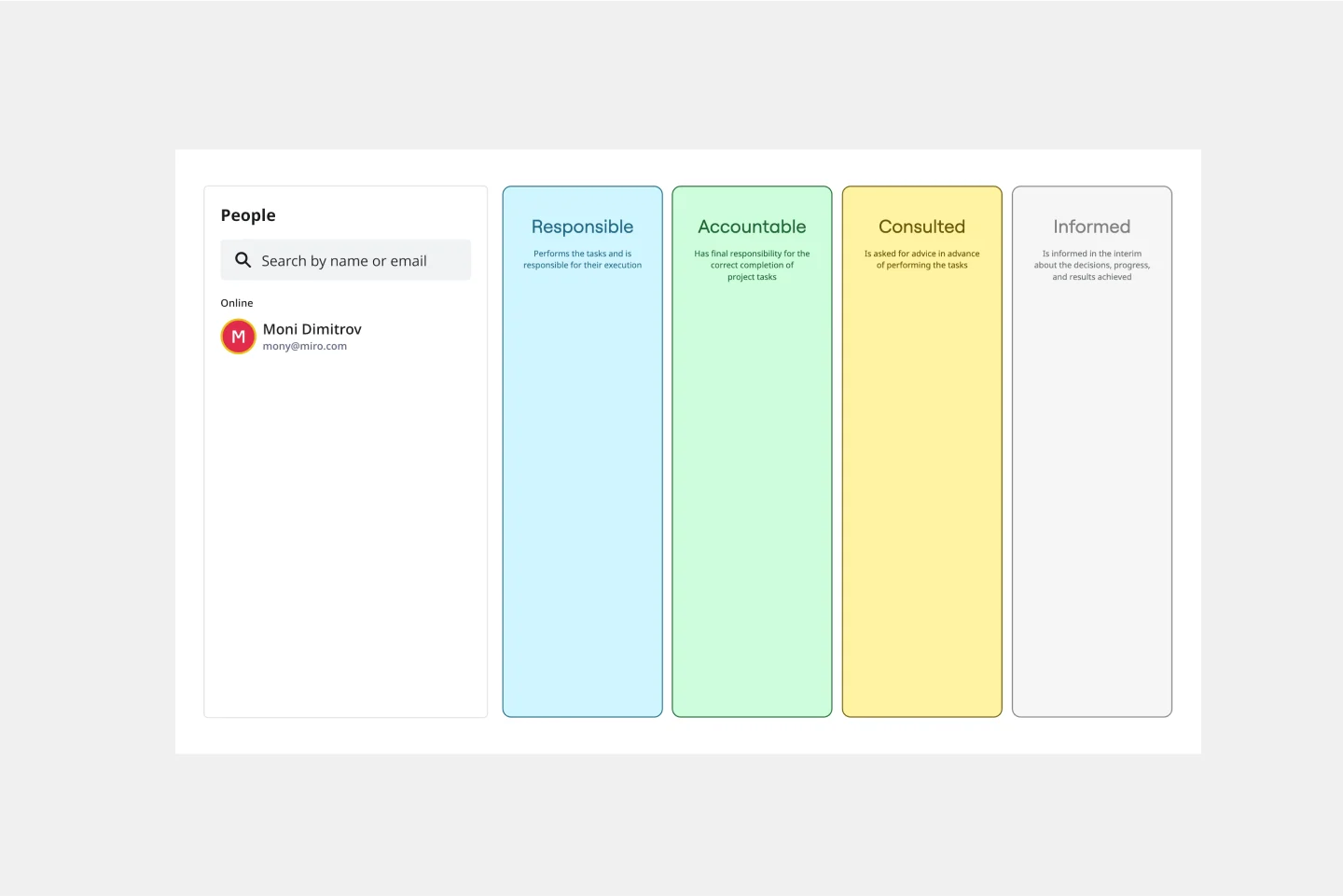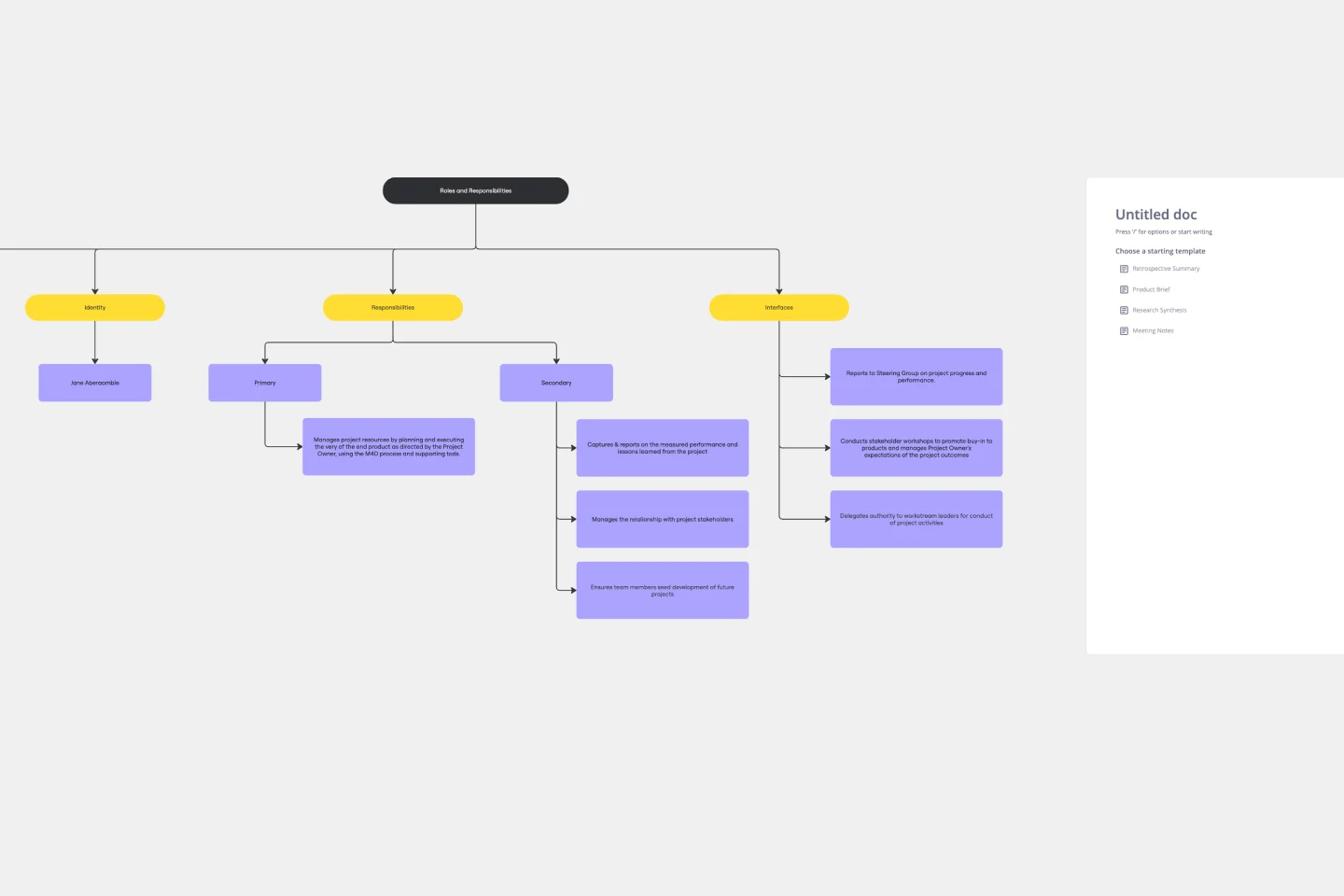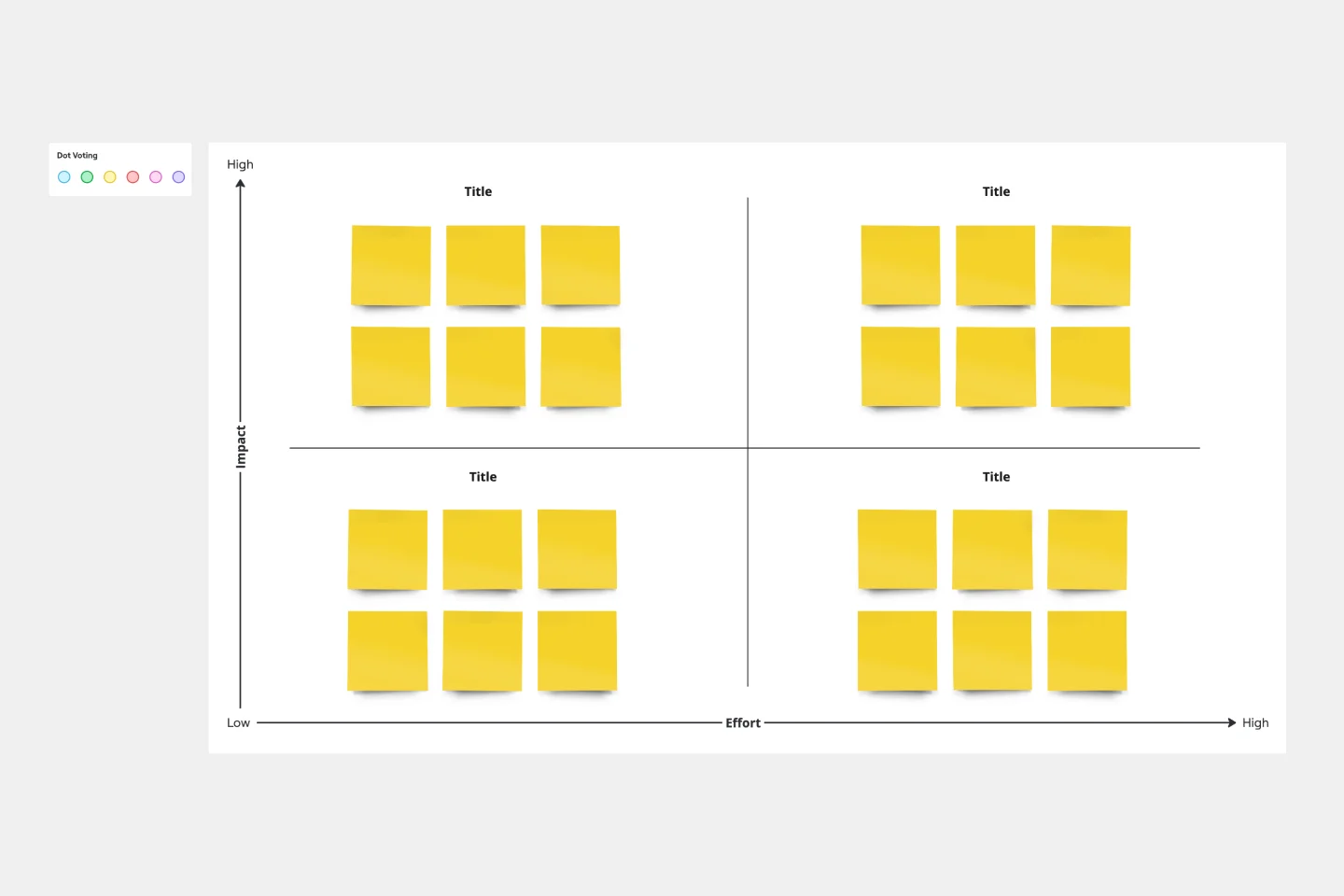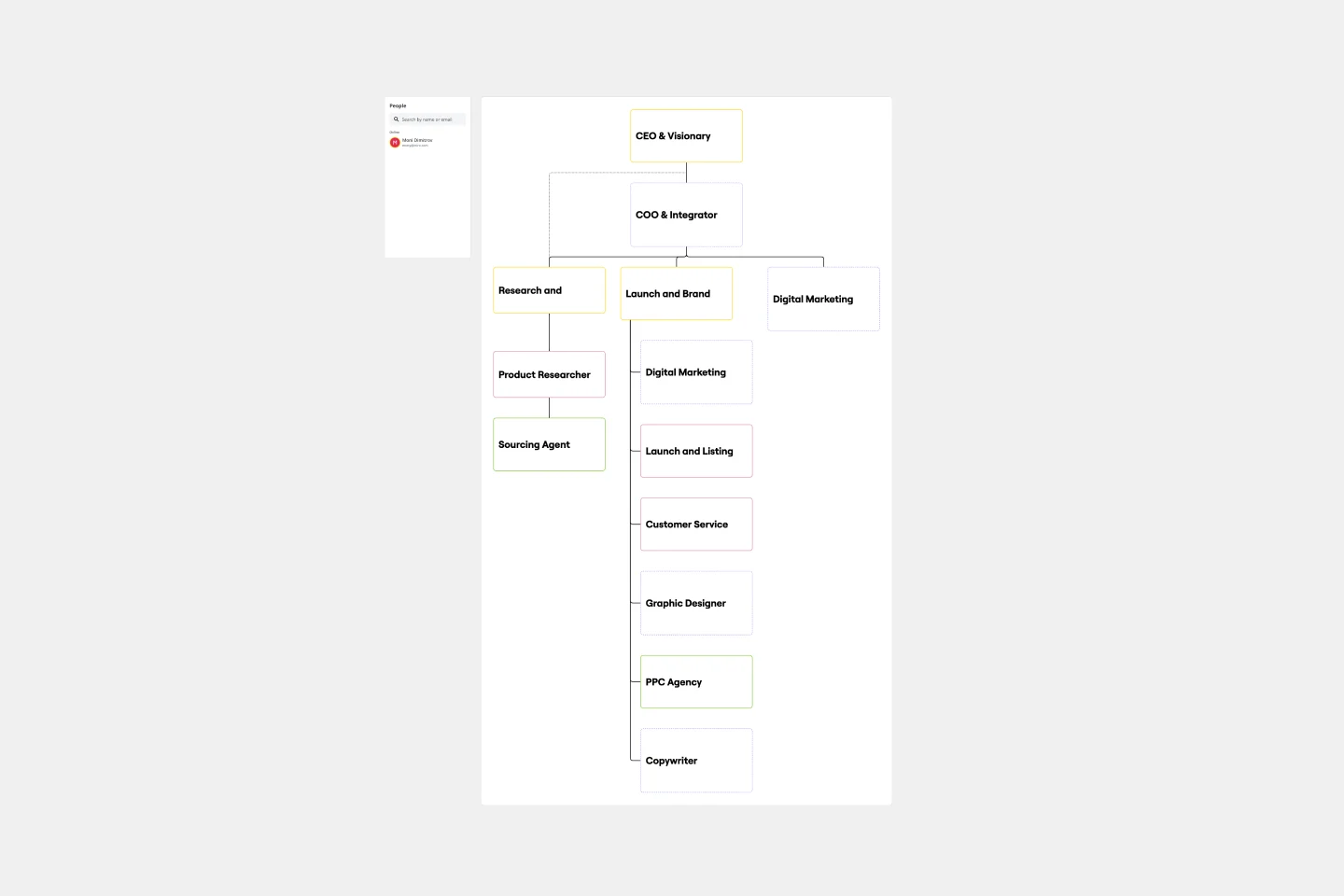RACI chart templates
Miro's RACI templates help you clarify roles and responsibilities effortlessly. Whether you're managing projects, aligning teams, or streamlining workflows, these templates provide a clear structure to define accountability, improve collaboration, and drive success.
6 templates
RACI Matrix
RACI Matrix for Project Management
RACI Matrix Template

RACI Matrix Template
The RACI Matrix is an essential management tool that helps teams keep track of roles and responsibilities and can avoid confusion during projects. The acronym RACI stands for Responsible (the person who does the work to achieve the task and is responsible for getting the work done or decision made); Accountable (the person who is accountable for the correct and thorough completion of the task); Consulted (the people who provide information for the project and with whom there is two-way communication); Informed (the people who are kept informed of progress and with whom there is one-way communication).
Roles and Responsibilities Template

Roles and Responsibilities Template
The Roles and Responsibilities Template is a key tool, acting as a visual compass to guide teams in delineating and understanding every member's specific tasks within a project or organizational setting. Its standout benefit is its clarity, ensuring that each team member is aligned in their tasks, ultimately fostering enhanced collaboration. By eliminating potential ambiguities and misunderstandings about who does what, this template becomes an essential asset for teams aiming for efficiency, cohesiveness, and streamlined project execution. Whether for onboarding, day-to-day operations, or strategic planning, this template acts as a clear map to understand each team member’s responsibilities.
Action Priority Matrix Template

Action Priority Matrix Template
You and your teammates probably have more ideas than resources, which can make it difficult to prioritize tasks. Use an Action Priority Matrix to help choose the order in which you will work on your tasks, allowing you to save time and money and avoid getting bogged down in unnecessary work. An Action Priority Matrix is a simple diagram that allows you to score tasks based on their impact and the effort needed to complete them. You use your scores to plot each task in one of four quadrants: quick wins, major projects, fill-ins, and thankless tasks.
Accountability Chart Template

Accountability Chart Template
The Accountability Chart Template is a visual map detailing the various roles within an organization and the responsibilities tied to each. This systematic layout ensures clarity in defining duties and fosters a culture of accountability. A standout benefit of using this template is its capacity to eliminate role ambiguity. The Accountability Chart template ensures that every team member understands tasks by clearly depicting who is responsible for what. This leads to enhanced productivity and reduced task overlaps or missed assignments.

Explore more
About the RACI Chart Templates Collection
The Miro RACI chart templates help project managers streamline their project management processes. RACI stands for Responsible, Accountable, Consulted, and Informed, and these templates are essential tools for defining and clarifying roles and responsibilities within a project. By using Miro's RACI chart templates, teams can ensure that everyone knows their specific duties, which helps avoid confusion and enhance productivity.
Why you'll love our RACI chart templates
Using RACI chart templates in Miro offers many benefits:
Clarity in roles and responsibilities: Clearly defines who is responsible, accountable, consulted, and informed for each task, reducing ambiguity.
Improved communication: Ensures that all team members are on the same page, facilitating better communication and collaboration.
Enhanced accountability: Assigns accountability to specific individuals, making it easier to track progress and hold team members responsible for their tasks.
Efficient decision-making: Streamlines the decision-making process by identifying who needs to be consulted and informed, thus speeding up project timelines.
Conflict resolution: Helps in resolving conflicts by providing a clear structure of responsibilities and expectations.
Scalability: Suitable for projects of any size, from small teams to large organizations, making it a versatile tool for project management.
How to use the RACI chart templates in Miro
Using Miro's RACI chart templates is straightforward and can be broken down into the following steps:
Select a template: Choose a RACI chart template from Miro's template library. There, you can find the simple RACI matrix template.
Define tasks and activities: List all the tasks and activities that need to be completed for your project.
Assign roles: For each task, assign the roles of Responsible, Accountable, Consulted, and Informed. Ensure that each task has one person accountable and one or more responsible individuals.
Consult and inform: Identify the stakeholders who need to be consulted for their input and those who need to be informed about the progress.
Review and adjust: Regularly review the RACI chart with your team to ensure that it remains accurate and up-to-date. Make adjustments as necessary to reflect any changes in the project.
Communicate: Share the RACI chart with all team members and stakeholders to ensure everyone understands their roles and responsibilities.
By following these steps, you can efficiently manage your projects by using Miro's RACI chart templates. In addition or as an alternative to RACI charts, consider using a roles and responsibilities template to provide clarity and accountability throughout projects.
Our RACI chart templates are powerful tools that help project managers and teams thrive by providing clarity, improving communication, and enhancing accountability. These templates can ensure that your projects run smoothly and that everyone involved knows their specific roles and responsibilities. Embrace the simplicity and efficiency of Miro's RACI chart templates to take your project management to the next level.

